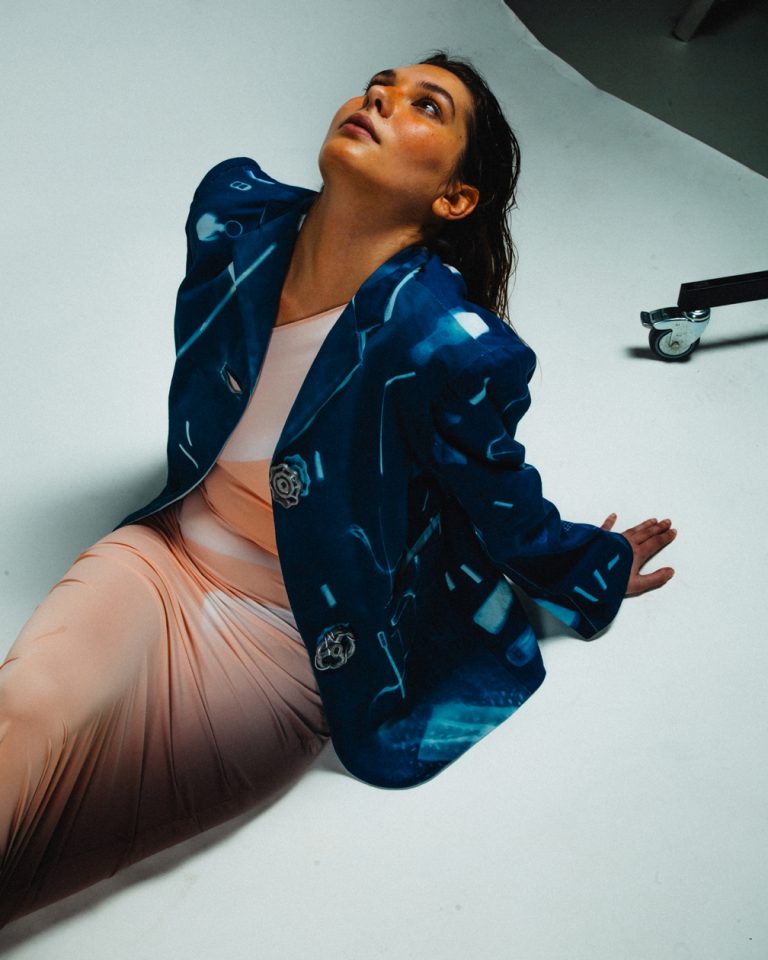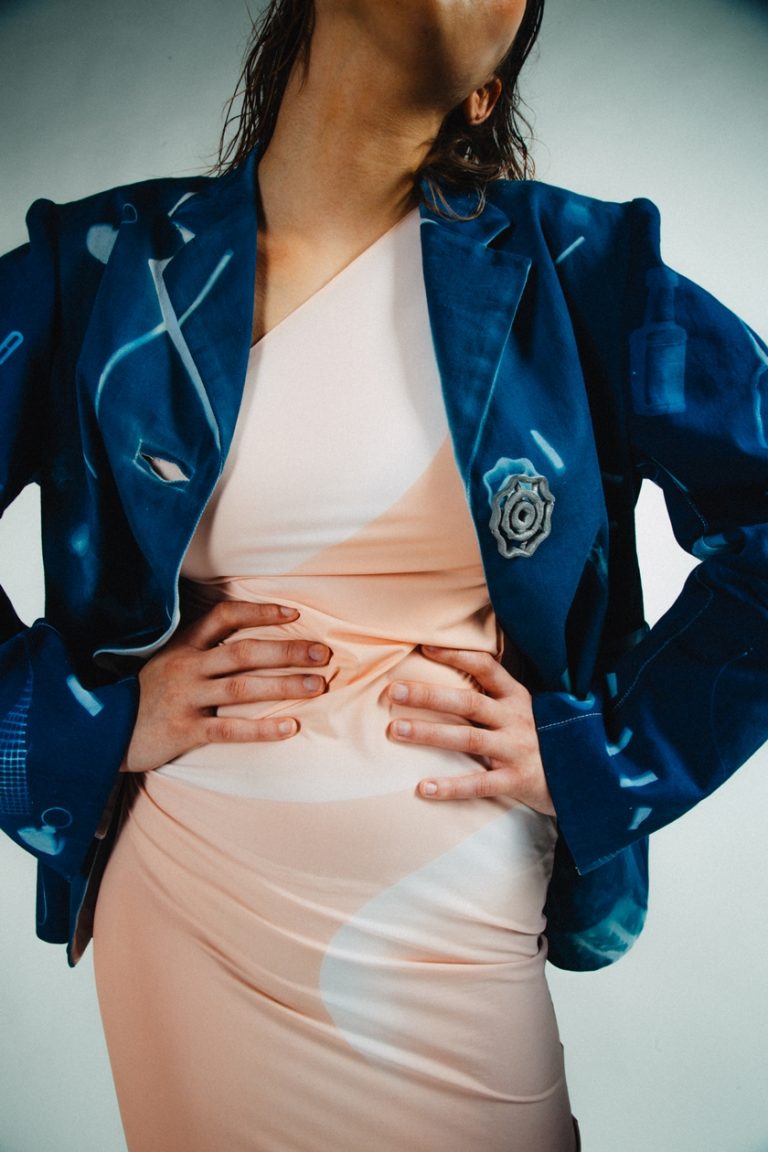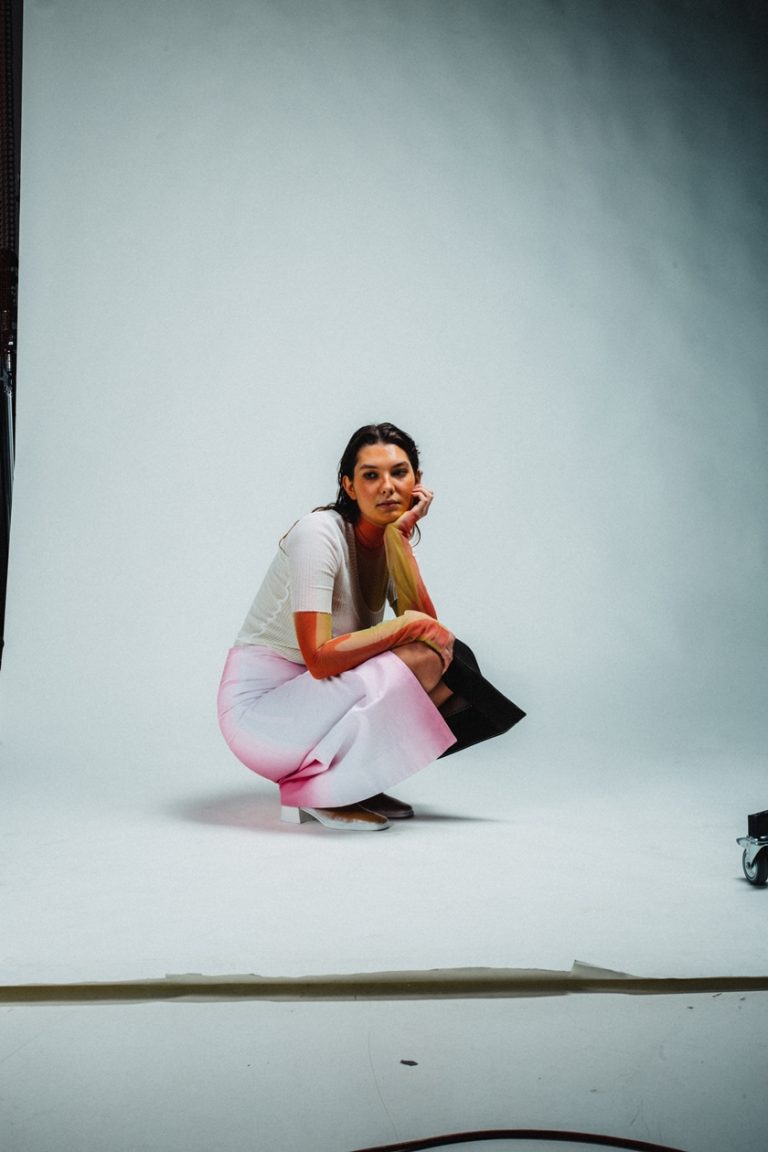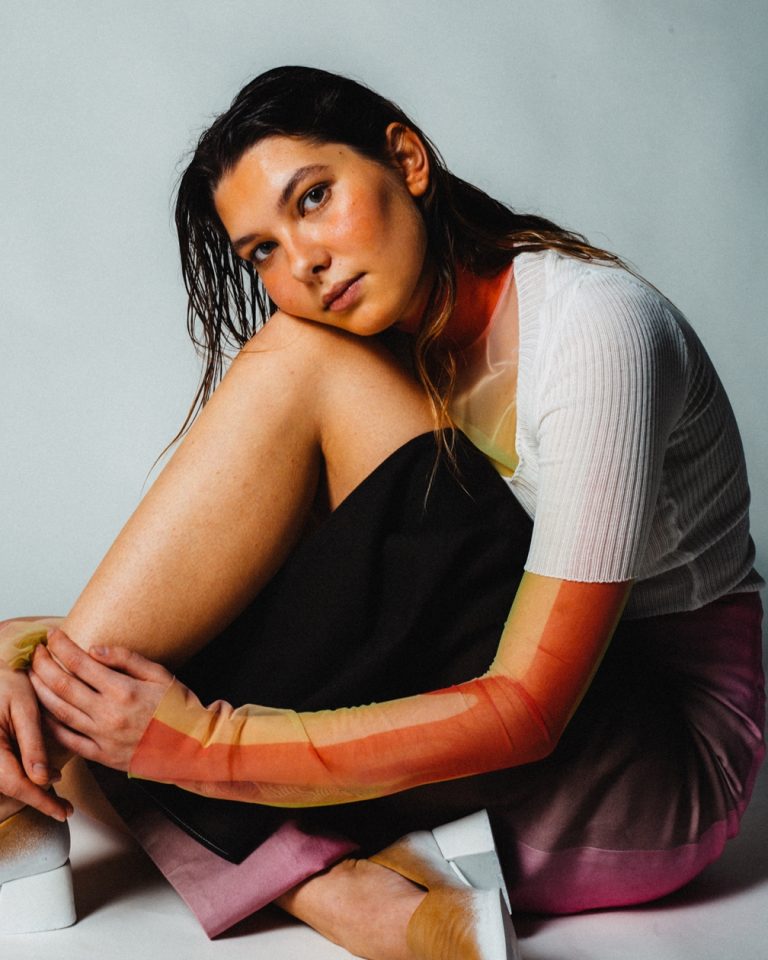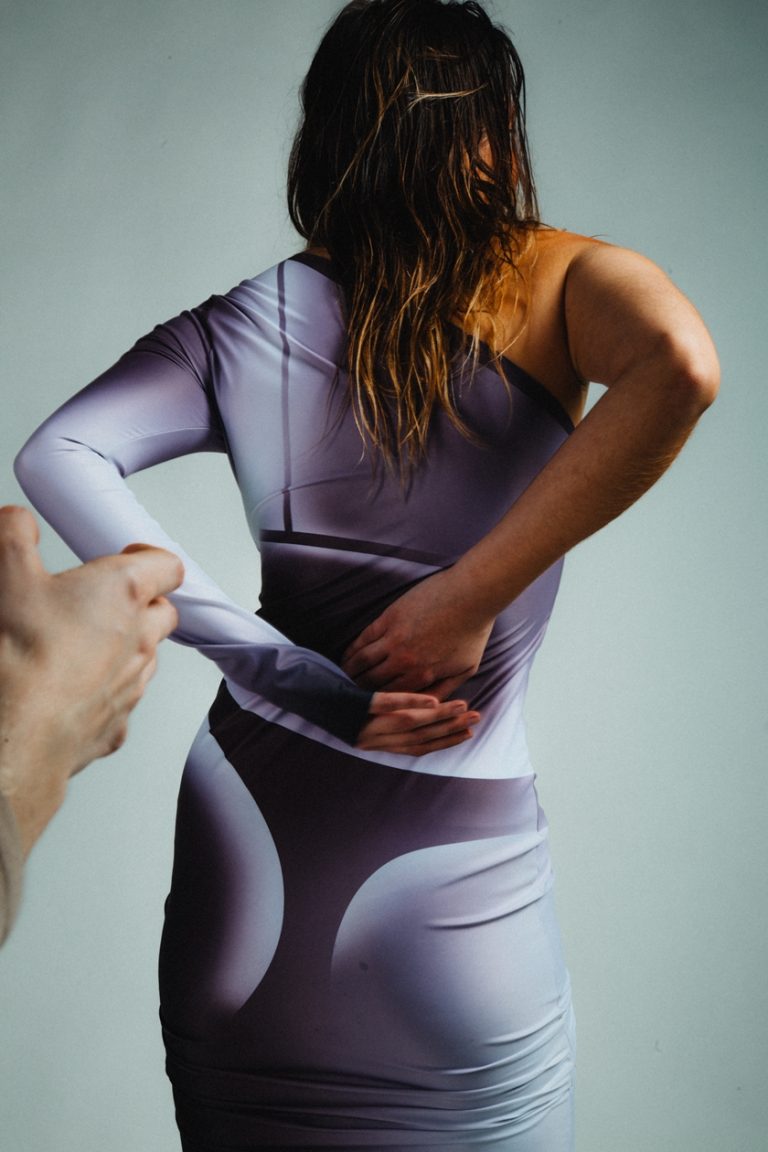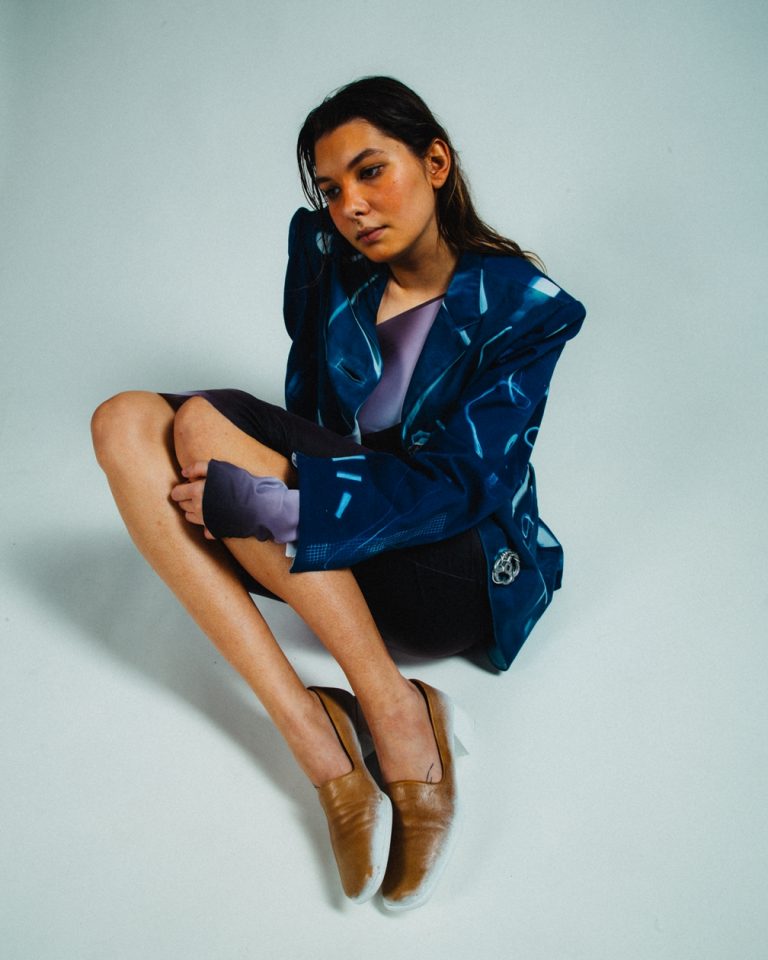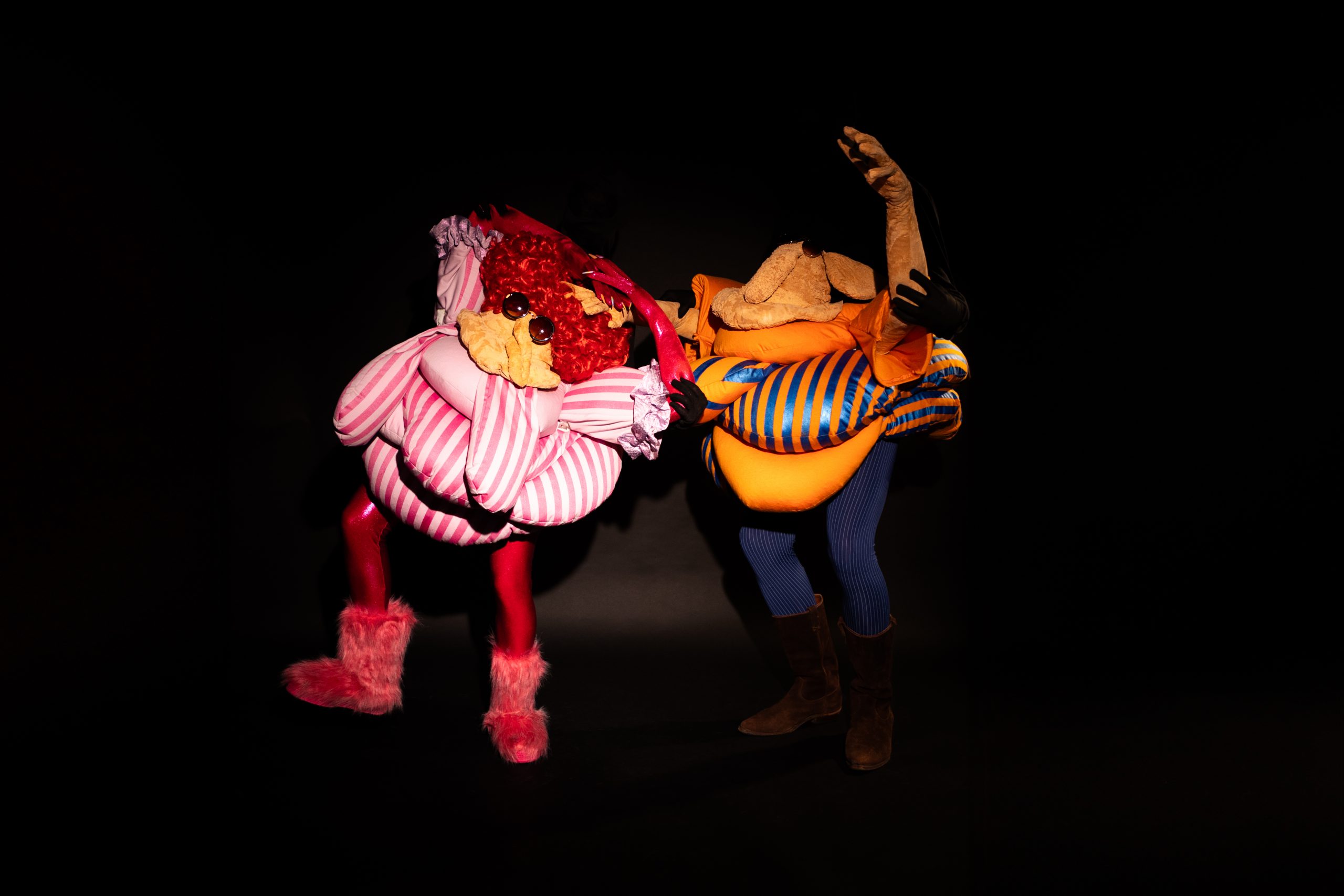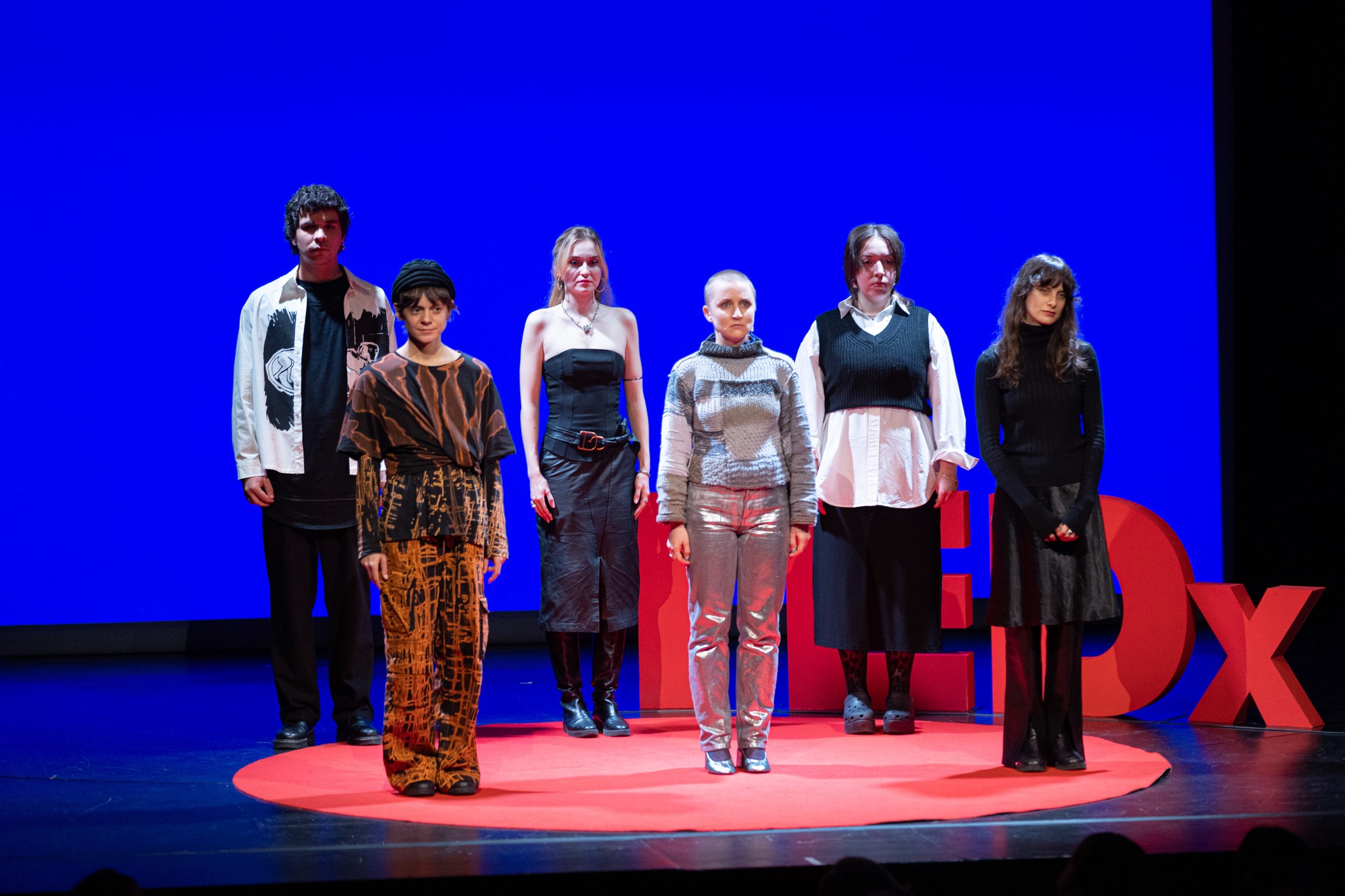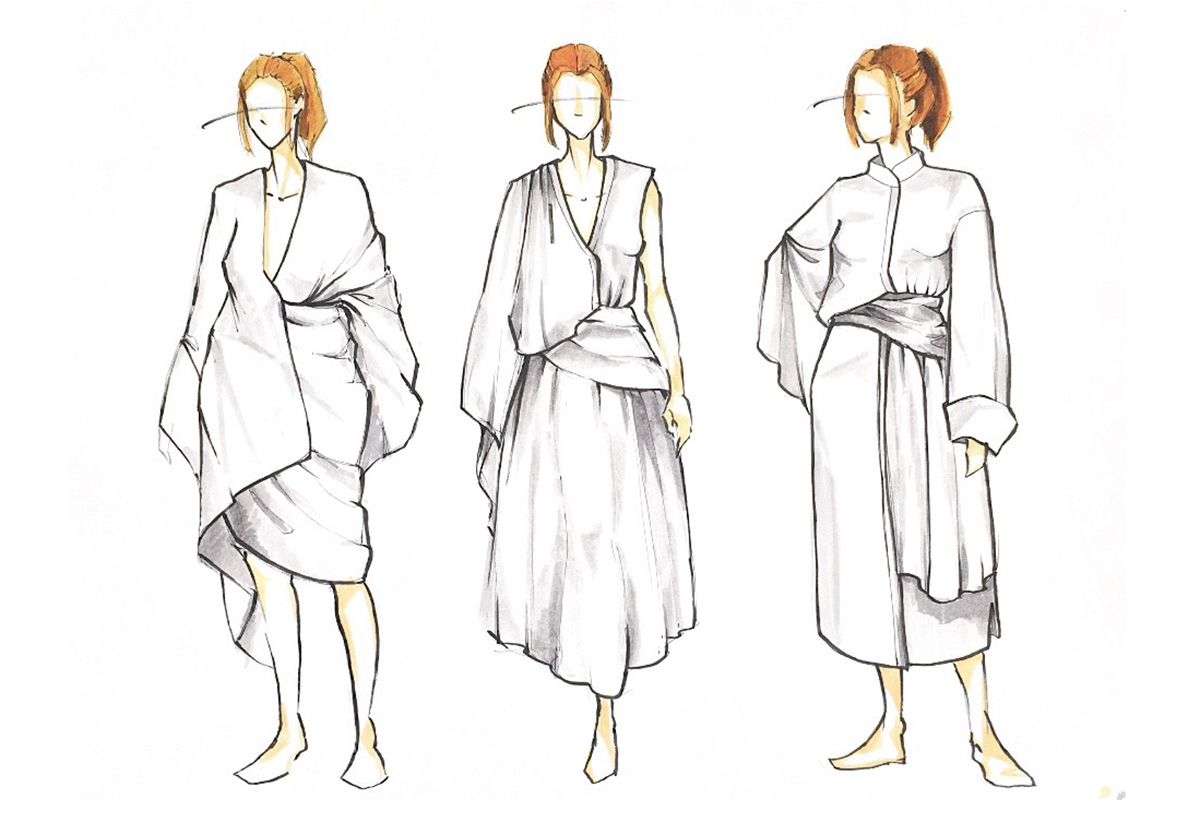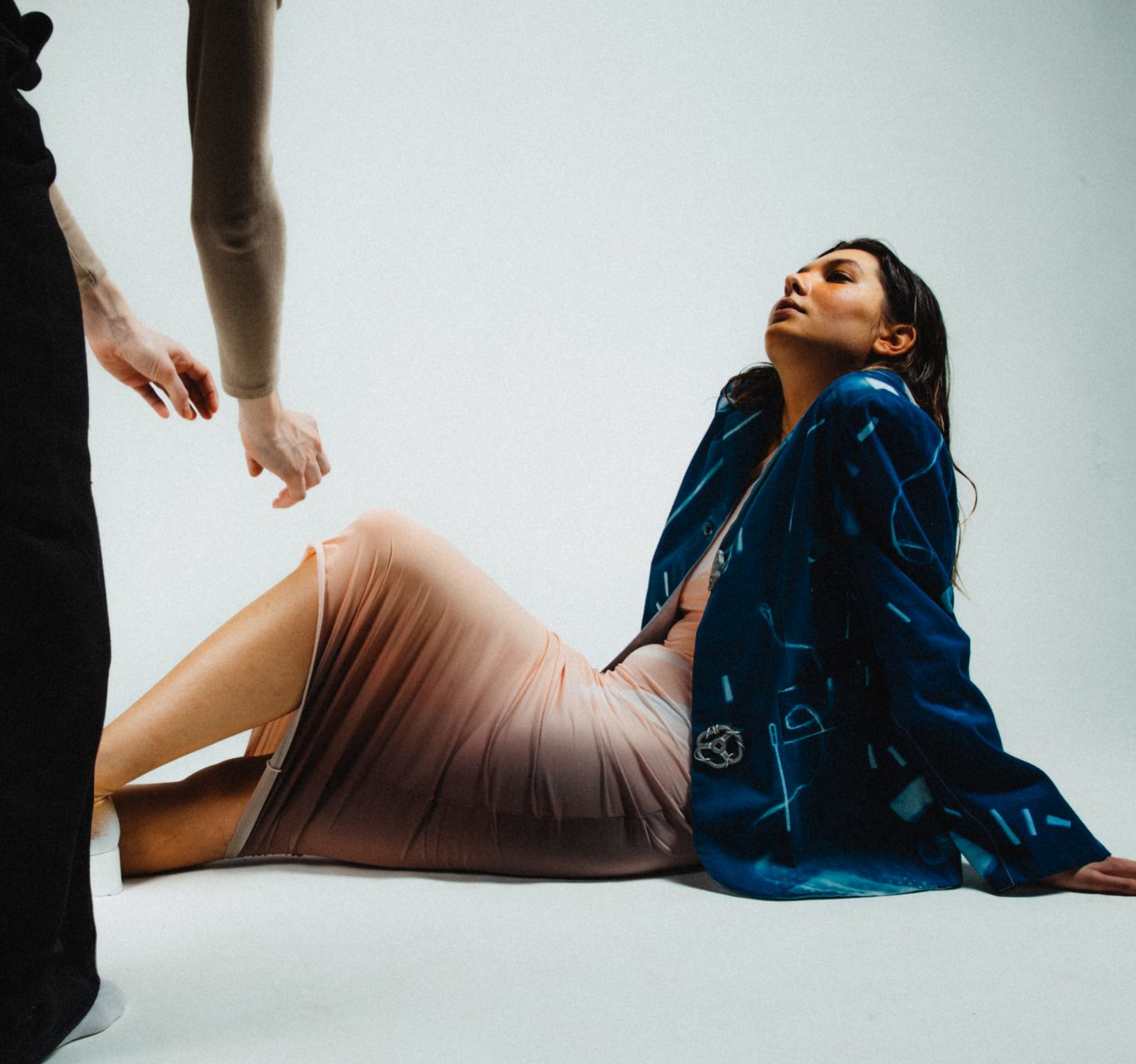
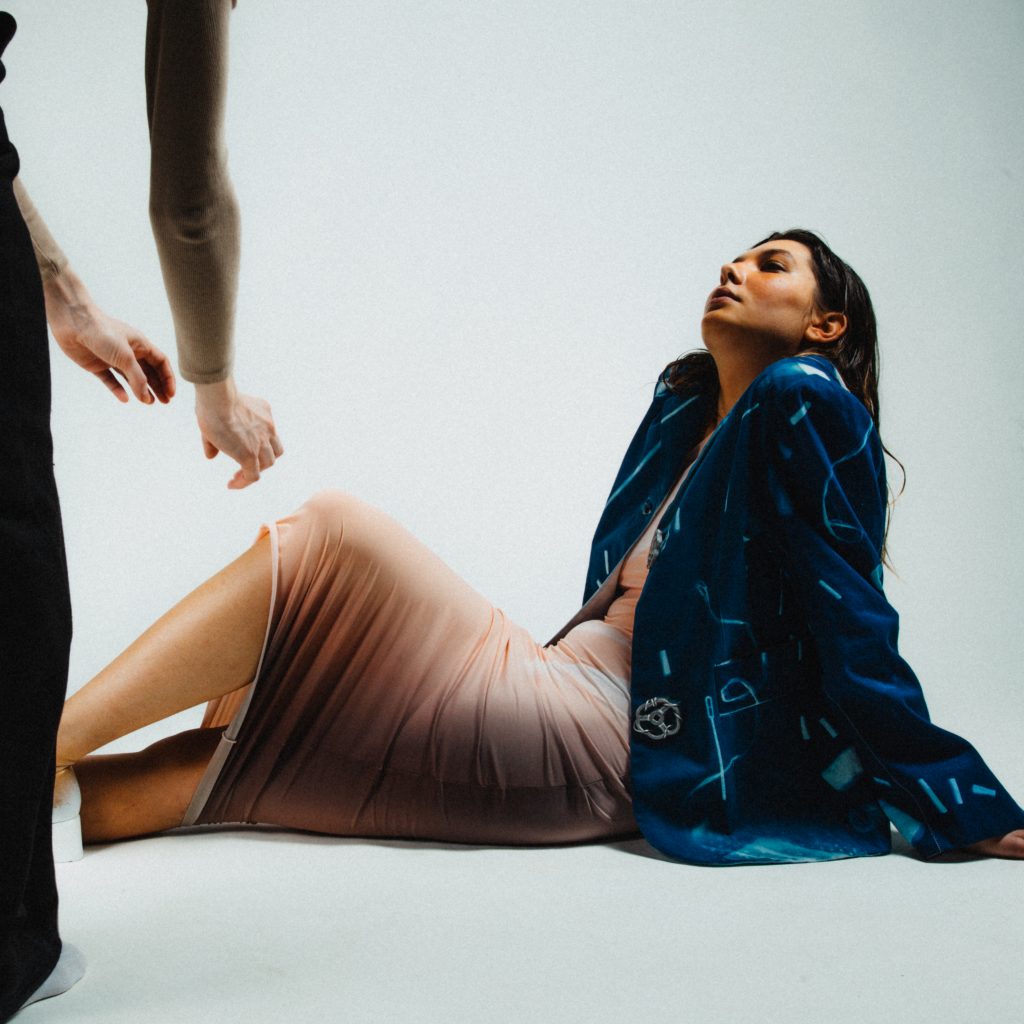
Sustainability without contradictions – Réka Huszár and Lala Tóth’s mono-material collection
There is hardly any brand or creator not engaged in exploring the subject of sustainability, which by now has become a core value for designers and also an essential selling point. On the other hand, eco-conscious gestures are not always sincere or sufficiently thought through. Réka Huszár and Lala Tóth employ an unusual set of tools as opposed to empty phrases to approach the subject. Their solutions are based on a sensible and real-life concept.

According to the basic principle of their collection, each item of clothing must be made from strictly one type of material for ease of recycling. This requires the designers to be truly inventive and come up with unique fastening methods. They used loop and lace-up fastening for the trousers for example, whereas they needed to make sure to use a thread made from the same material as the fabric for items without any fastening.
“We can cover the entire life cycle of an item by using mono-materials.”
This is not a completely new concept: folk costumes worn by the peasantry are full of examples of mono-material use, as back in the day, everything needed to be made manually from what was available. This way, the collection ties back to an earlier era and way of life that used the same principles for the life cycle and fastening methods of garments, though not for environmental considerations.
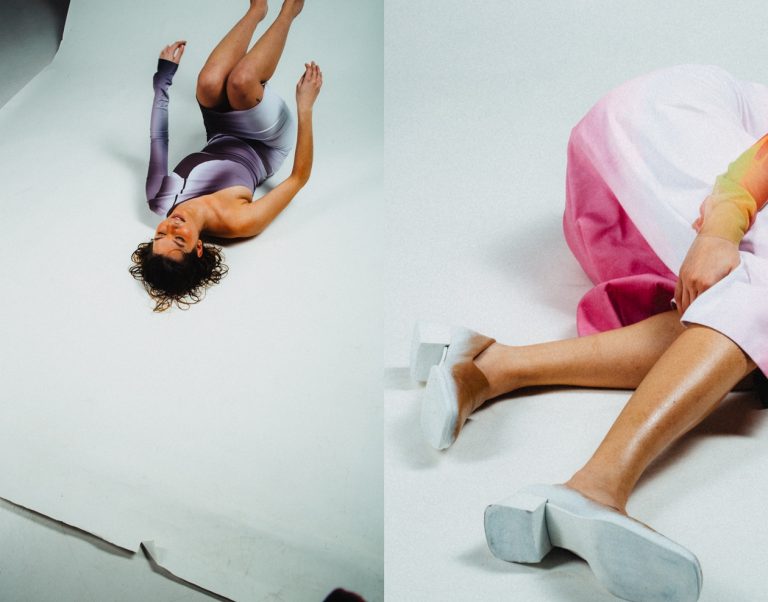
The clothes are adorned with ingenious metal accessories. Each one of these items were salvaged during the council clean-up and were further processed by the girls. What makes the bearing closure buttons on the jacket doubly interesting is that they harmonise with the print on the fabric.
The surface of the clothes is the main platform for communication. Réka and Lala operate with content associations in the print that draw attention to the impacts of climate change. The Sunburn Dress and the mesh mock neck top feature spots that resemble the ones caused by sunburn. The fabric of the jacket, the trousers, and the hat are all imprinted with symbols of everyday waste using cyanotype, a process where a fabric coated with photosensitive solution will turn blue when exposed to UV light, while the covered spots will remain white.
“This process illustrates how life-giving sunlight becomes a threat as a result of environmental pollution.”
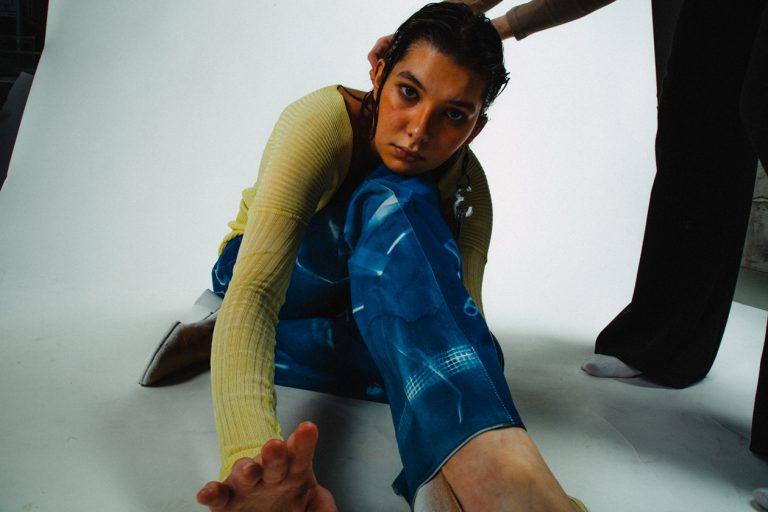
Given the use of handcraft techniques and the incorporation of found items, the question of how such a collection can be reproduced comes up often. The collection also includes items that are easier to produce. The designers make a careful selection and bring it to the market gradually, describing the rest of the items that cannot be reproduced as follows:
“We need to be able to accept that only a single piece might exist from an item. And if there is one other piece, we need to accept that it is not going to be identical.”
This readiness to accept hard choices lies at the heart of eco-conscious designer thinking. What make gestures genuine is their ease and simplicity. To have a pared down clothes shopping culture, we need to search for designer concepts that are not about changing the world, rather about making a decision and following through with it.


// /
Réka Huszár and Lala Tóth’s joint collection was created for the 2021 Syoss fashion competition and was selected into the top ten.
Photo: Ágnes Tar Ágnes @4.gnes
Make-up: Zsófi Hajdú @zsofihajdumakeup
Model: Dalma Habony @dalmahabony
Clothes: Réka Huszár @reka_huszar Lala Tóth @toth.lala
Graphics: Boldizsár Tóth @bobbej
